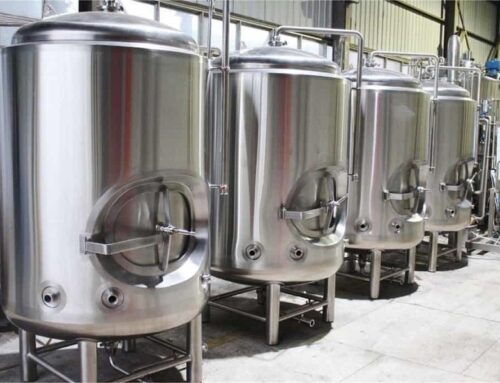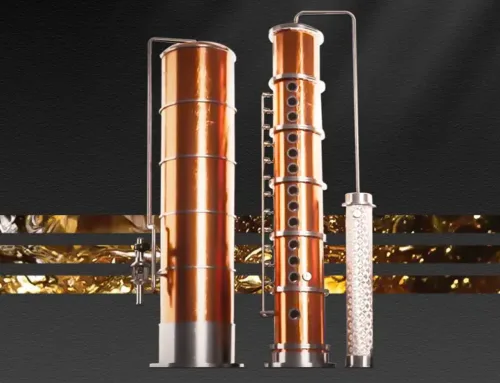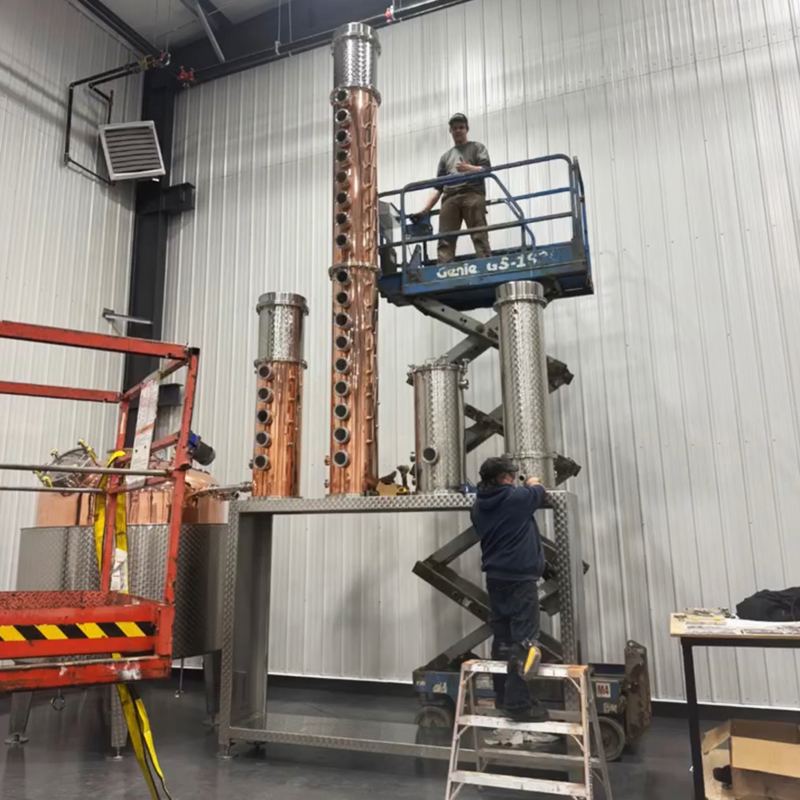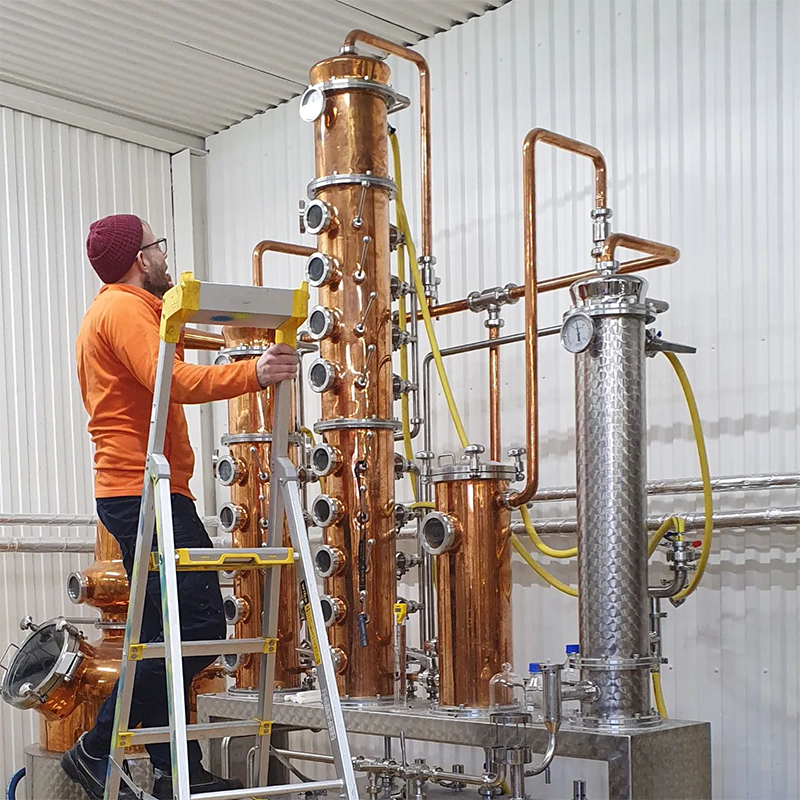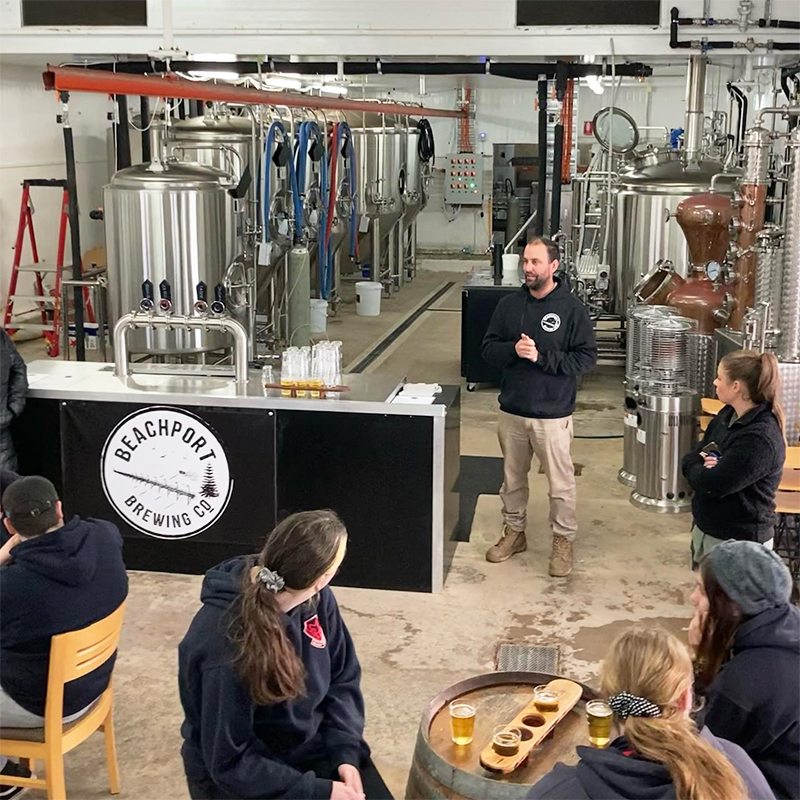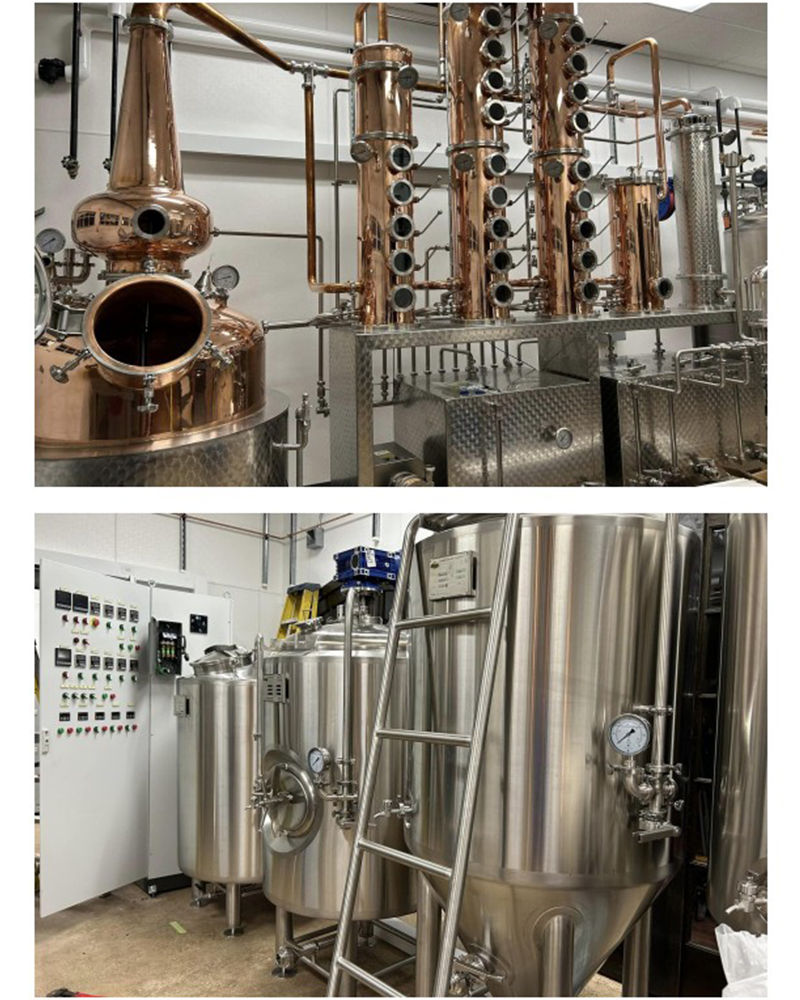
The Ultimate Guide to Distillation: From Fermentation to Finishing Touches
Distillation is an age-old process crucial in creating a variety of beloved spirits like whiskey, rum, and vodka. Let’s dive into the steps of distillation, to understand how raw materials transform into the spirits we enjoy.
Fermentation: The Starting Point
Fermentation is the initial and critical stage in distillation, transforming raw materials into a fermentable state. Materials such as fruit, sugar cane, and agave already contain sugar, but grains need to convert their starch into fermentable sugars. This conversion occurs by cooking the grains in hot water with enzymes, a process known as mashing in whiskey and beer production. The resulting liquid, called wort, is then ready for fermentation.
Once the base material is prepared, it is transferred to fermentation tanks where yeast is introduced. The type of yeast can vary: some producers use commercial varieties, others cultivate proprietary strains, and some rely on naturally occurring wild yeast. Fermentation typically lasts three to five days, although some distillers extend it to seven or nine days. This stage is pivotal for developing aromas and flavors, with rum producers attributing at least 50% of their product’s flavor to the fermentation process.
Distillation: Concentrating the Spirit
Distillation heats the fermented liquid to its boiling point, capturing the vapors that emerge, and then recondensing them into liquid form. This step not only concentrates the alcohol but also separates desirable and undesirable elements.
The first compounds to evaporate, called “heads,” are usually undesirable, often compared to nail polish remover. The “heart” follows, containing the desirable flavor compounds. Lastly, the “tails” come off, carrying undesirable odors like rubber or overcooked vegetables. These tails are either discarded or redistilled. The distiller’s skill is crucial in making the right cuts to maximize the heart while minimizing the tails.
Spirits may be distilled multiple times to achieve the desired character. Scotch and Irish whiskeys, for instance, are commonly distilled two or three times for a lighter, smoother profile, while vodka may undergo many distillations to become as neutral as possible.

There are two main types of stills: pot stills and column stills. Pot stills, usually made of copper, have a rounded body and produce robust, flavorful spirits. Column stills, which can be made of copper or stainless steel, have tall, thin chambers and produce lighter distillates.
Maturation: Aging the Spirit
Post-distillation, spirits like whiskey and brandy are matured in wooden barrels. This step imparts the familiar amber hue and complex flavors such as vanilla, dried fruit, or spice. Bourbon producers use new, charred American oak barrels, while others have more flexibility, using oak from various countries. The maturation period varies from days to years, depending on the spirit.
Some producers further age their spirits in different barrels for finishing, adding layers of flavor. For instance, Bourbon barrels might be used after initial aging to impart additional characteristics. This aging process can contribute significantly to a spirit’s flavor and color.
Clear spirits like vodka and gin often skip this maturation step or use glass or clay vessels to mellow without adding color or flavor.
Blending and Proofing: Refining the Spirit
Most spirits, except single-cask products, are blended to ensure consistency and add complexity. Whiskey producers might blend different barrels to create a distinct flavor profile. Similarly, rum and Cognac producers blend distillates of varying ages.
After blending, spirits are usually diluted with water to achieve a palatable alcohol level, a process known as proofing. Some producers experiment with different liquids for proofing to enhance the final product.
Filtration: Polishing the Liquid
Before bottling, spirits undergo filtration to remove particles and polish the liquid. This can range from simple metal screens to carbon filtration, which removes color and impurities. Vodka is especially known for using elaborate filtration materials like quartz and diamond dust.
Some spirits are chill filtered by lowering the temperature and passing the liquid through filters to remove compounds that cause cloudiness. However, many distillers now prefer non-chill filtering to preserve flavor and texture, labeling their products accordingly.
Enhancing the Spirit
Before hitting the shelves, some spirits undergo additional processes. For example, gin is infused with botanicals like juniper, while spiced rums and flavored whiskeys are combined with other ingredients to create unique profiles. These finishing touches ensure that the final product is enjoyable and distinctive.

Understanding the intricacies of distillation enhances appreciation for the craftsmanship behind your favorite spirits. From fermentation to the final finishing touches, each step plays a vital role in creating a high-quality product.

